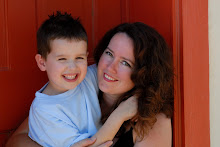So this is my pinhole camera. 
I chose an old container that originally held pork chitterlings. For anyone that is fanning themselves in horror at my abuse of a "vintage" item, get on with the fanning because this thing smelled like an old bag of pork rinds when I bought it. And, at least I'm using it for something. Blah, blah, blah, keep fanning.
Anyway, the first thing I did was to use a matte, black spray paint to cover the inside. Since it was a thousand degrees outside I decided to do this part of the project inside. In my kitchen. Now, in my defense, I did lay down a painting tarp on my kitchen island and I did work very carefully in order to not get over-spray on anything. And I did a really good job with that because not one black spot appeared anywhere except where it was supposed to (and my hand but that's washable.) However, did you know that the fumes from spray paint are kind of noxious? And that even if you turn the stove vent on super high and leave it on for an hour, it still kind of smells? Hm, learn something new every day.
Here's my camera all painted up. The tape in the lid holds the paper.
Then you need a lens of sorts. This is created by cutting a small hole (about 1/2 inch square) in the very center of the end of your container. Then, you take a piece of aluminum (or something equally sturdy) and you poke a pinhole in it (hence the name). Now, the exact size of the pinhole depends on the size of the container. There's a whole calculation involving the length of the container but basically in my case, the pinhole needed to be somewhere between one half and one quarter of 1/16th of an inch. So, in highly technical terms, small. After you've got a pinhole in the aluminum, you line it up to be exactly centered on the hole you centered on your container. For a "shutter" you can use a piece of black electrical tape.
In my case, the bottom of my container became the front of the camera and it looked like this...
The light sensitive paper goes on the opposite side, in my case this was in the lid and I attached it with tape. Because you're working with light sensitive paper you have to "load" the camera in complete darkness. So I shut the bathroom shades and barricaded myself in my closet with towels stuffed under the door and blocking the vent. Unfortunately I have a round camera with no obvious "top" and I really needed to know which was going to be the top so I could load my paper properly and in the dark this would be almost impossible. Lucky for me, one section of the lid had a scuffed area that I could feel and this became my top.
Once the paper is loaded and the camera is closed back up you can leave the dark and go find your subject. You set up your subject and your camera and when you're ready, you remove the black, electrical tape shutter and start timing. Since each camera is different, the exposure time will be different. I tried one minute, two minutes, four minutes and six minutes for each subject. When the time is up, simply slap the tape back on the pinhole, barricade yourself back in the dark and switch out the paper.
The biggest issue with this camera is that I don't have a true dark room with all the chemicals so I can't just develop each picture as I take it to figure out if it worked or not. I had to wait several days after taking the pictures to get back to the lab and develop them. What I figured out was that with my camera, the longer exposures were too long. The first three worked well enough that I could have printed a picture, but six minutes basically came out black. After all of that, when you go to the lab to see what you got you will end up with a negative of the subject.
You pick the best negative and then head back into the lab to produce the picture. The easiest way to explain it is that you take the negative and put it face to face with another piece of light sensitive paper, put glass over the top and then expose it to light. Then, you go through the chemical process again to create your picture.
Now, a couple of things should be noted here. Firstly, the pictures are obviously in black and white. Secondly, they are not razor sharp like regular camera. But, considering that there are no mechanics and it's really just a container with a hole in it, I think they came out pretty cool.
The coop. 
Master J reading.
Not bad for an old chitterlings container and some tape.
*side note, the pictures had to be scanned in and sent to my desktop in order to get them on this post.
Thursday, September 8, 2011
Pinhole Camera
Posted by Mirth at 10:55 AM
Labels: Photography
Subscribe to:
Post Comments (Atom)

1 comments:
What can I say,except "awesome",I am so impressed with what came out of the chitterlings container. I am a big fan of b/w and these 2 pics are a good example of what I like. Of course I "love" the subject in one of them:-)
Post a Comment